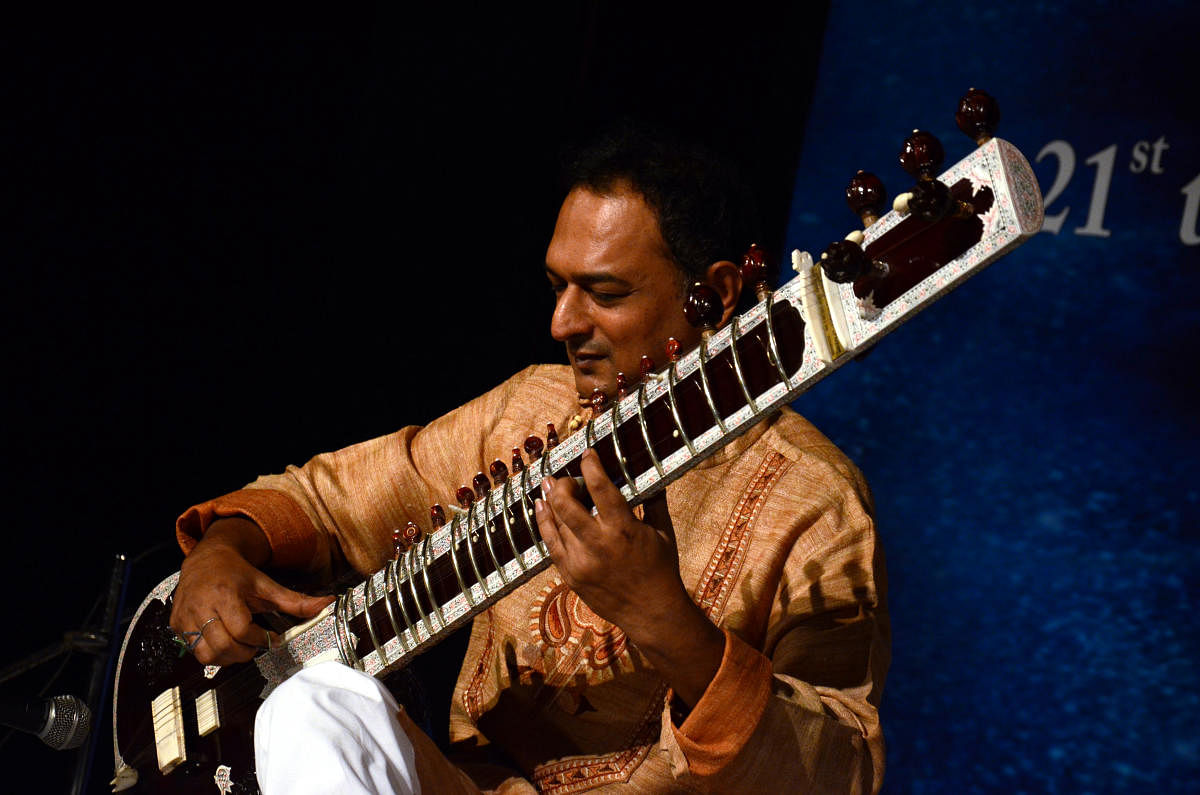
To music lovers, the latter part of the artiste’s name will ring a bell. This talented sitarist is the son and heir of the legendary sitarist, the late Ustad Abdul Halim Jaffer Khan, whom most aficionados regard as one of the immortal triad of sitarists — the others being the late Ustad Vilayat Khan and the late Pandit Ravi Shankar.
In keeping with his gharana tenet, Ustad Zunain Khan has infused the personality of his art with the significant touches of his gharana. So, listeners are served a bouquet garni of musical excellence gleaned and schooled in a unique sitar-playing tradition when Ustad Zunain Khan comes on the stage.
To the lay listener, the playing has an enveloping effect as the sitarist creates an overture of resounding notes along a composite sound vibration instead of the commonly heard purist, linear playing mode.
“Our tradition is indebted to the style of the ancient beenkars as the Indore gharana — to which I belong — is essentially a gharana based on the ancient been instrument, known for its resonance,” says the artiste. Thus, the main element of his music has a filled-in reverberation.
“Our gharana divides every note into 16 bhajas or sub-divisions,” he clarifies.
Several playing styles are introduced into the music as the concert proceeds so that the lay listener is charmed by the variety of notes displayed and the knowing among the audience can assess the competence of each note format.
Some of the high points of his playing in this gharana fashion are charkas or mood evocations, the larant patterns of vigorous playing, and the conciliatory format of the jodh or combination, making the characteristic aspects of his playing into a composite reference termed as jaffarkhani baaz.
While a purist and traditionalist in his art, he has also introduced his art to a large following at his school in the US, where both Indian and foreign students have been enrolling over the years.
The ustad’s observation is, “Indian students are very attached to their cultural roots abroad and take their play seriously. The foreign students are more receptive to the various nuances of the instrument and understand the technique of play when reproducing it in their music style.”
In his personal capacity, Ustaf Zunain Khan’s favourite platform for performing continues to be Bombay, where he spent his formative years under his guru’s guidance. With his dedication and continuity, Ustad Zunain Khan has managed to make his school exclusive to sitar-learning.
In the public gaze, the ustad has made another niche for himself by choosing to play the ragas that his late father had immortalised. These include the northern adaptation of the southern ragas Kirwani and Hemavati among others, which have now become the signature ragas of his gharana.
This sitarist treads on the path where tradition and innovation are but different sides of the same coin.